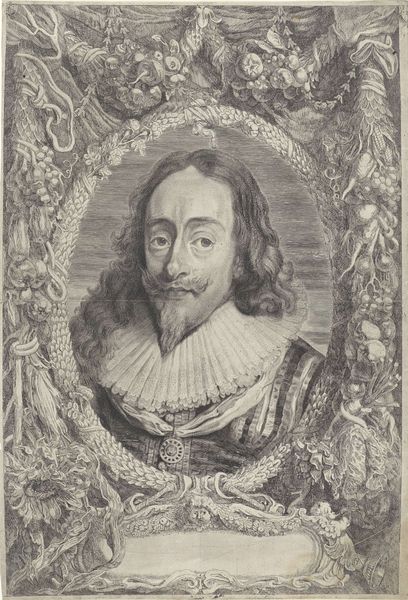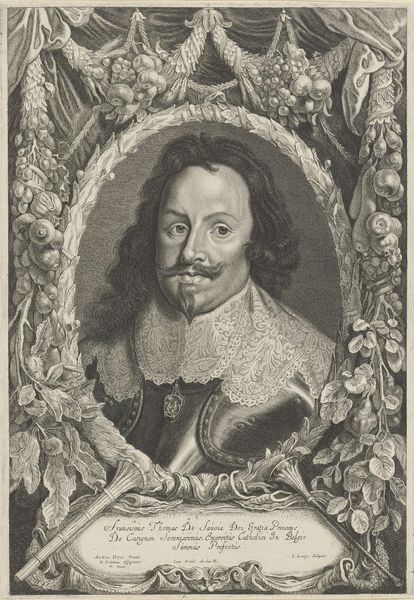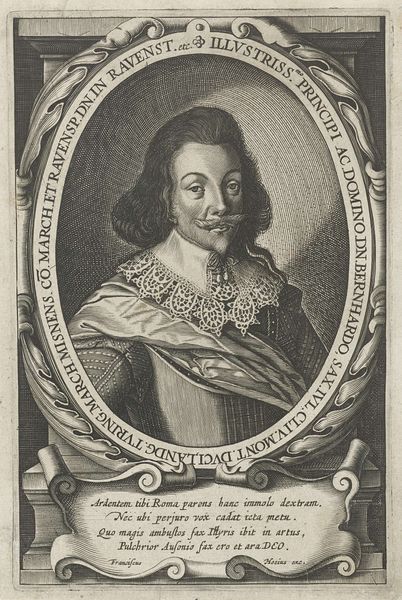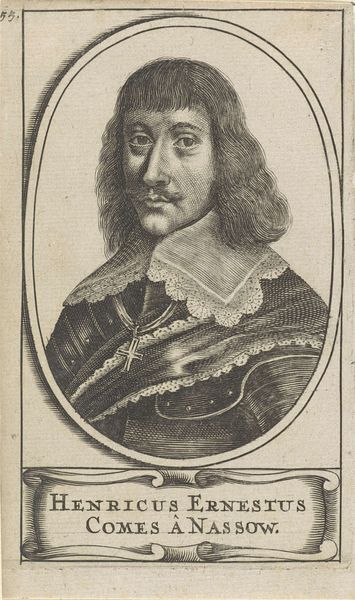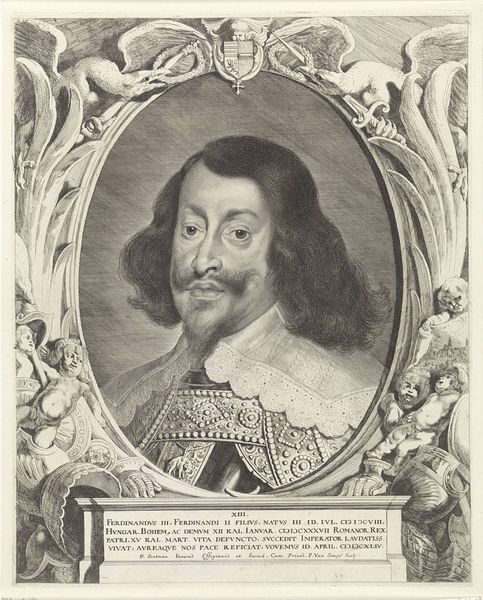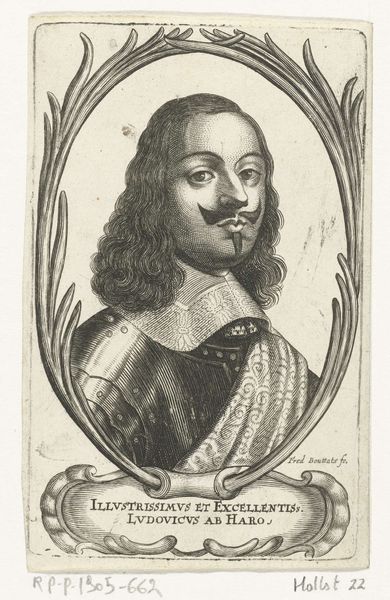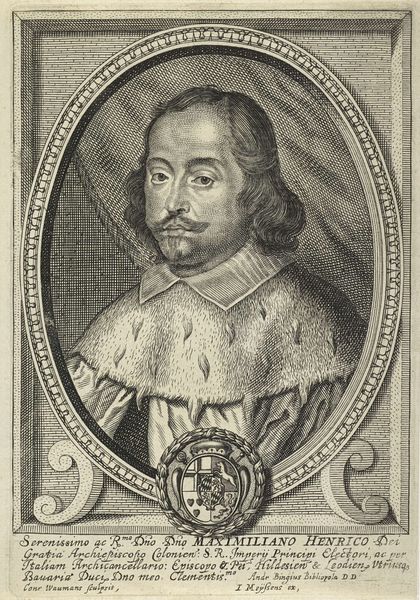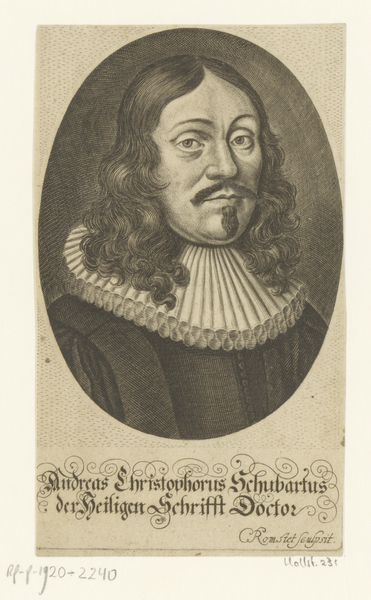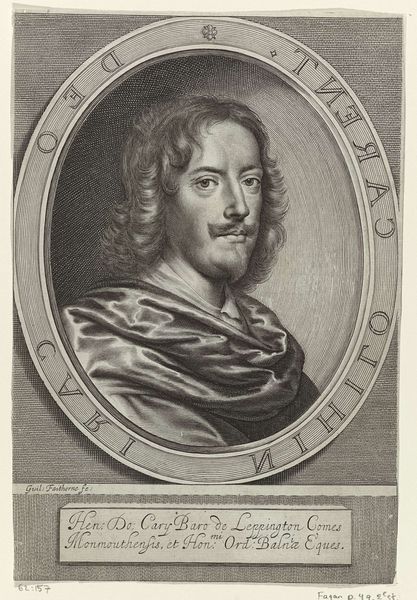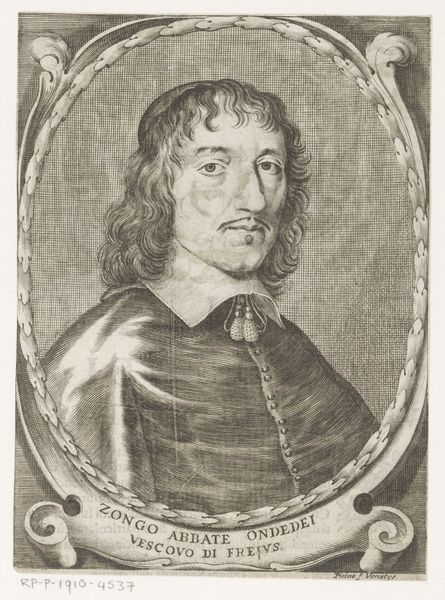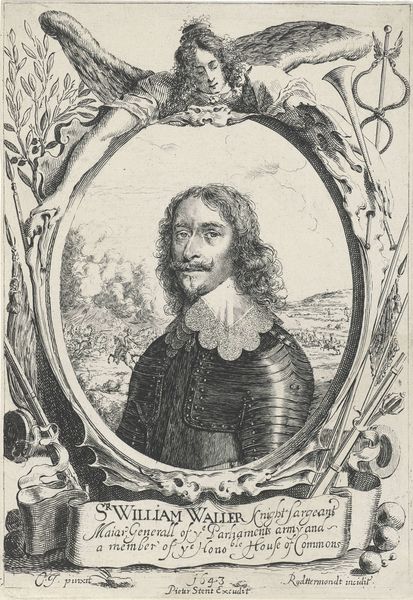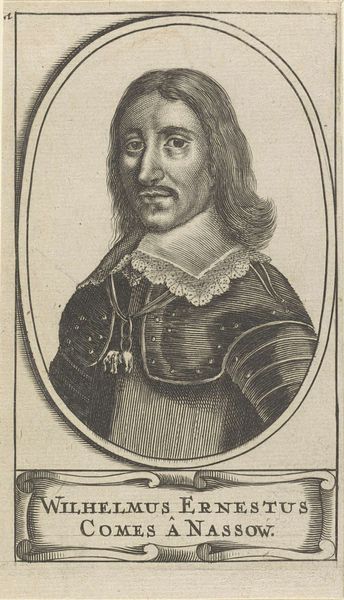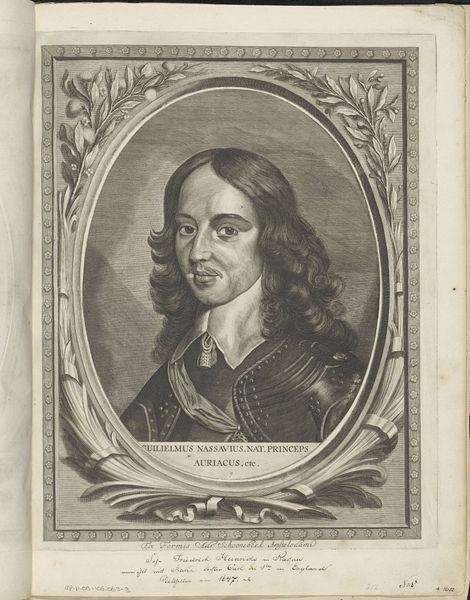
print, engraving
#
baroque
# print
#
history-painting
#
engraving
Dimensions: height 406 mm, width 280 mm
Copyright: Rijks Museum: Open Domain
Curator: Today we’re looking at "Portret van Karel I, koning van Engeland" a print made sometime between 1644 and 1650 by Jonas Suyderhoef. The artwork employs an engraving technique characteristic of the Baroque style. Editor: My immediate reaction is how constrained the image feels, both by the oval frame and the density of the surrounding decorations. There’s an overwhelming sense of detail. Curator: I agree; there's an elaborate symmetry at play here. Consider the intricate detailing of the fruit and floral arrangements framing the central portrait, and how they create a strong visual field around Charles I. The ruff, the ribbon sash, the curls – everything is meticulously rendered to direct your gaze towards his face. Editor: And that face tells such a story! The print was created during the English Civil War when his reign was in turmoil; this portrait exists as a form of propaganda and attempts to preserve an idealized image of divine right during that era. The ornate frame perhaps aims to elevate the king above the fray of political struggle and the seeds of revolution which were rapidly taking hold at the time of the original painting, from which the print was struck. Curator: An insightful perspective. Technically, look at the contrast Suyderhoef achieves with his lines! The delicate gradations around the face offset against the crisply defined lace, and the weightier shading in the garland create a striking focal point. Editor: Absolutely. And those eyes... there's such a depth, rendered masterfully using a network of engraved hatches, it makes you think of the immense weight of kingship during these times, the expectation of absolute power, even as the foundations crumbled beneath him. It brings an immediacy to the print which echoes well over three and a half centuries. Curator: The portrait becomes not just an image, but a powerful commentary on power, isn't it? Editor: Precisely! And by placing this work in a historical framework we begin to interpret it more fully as an emblem of collapsing power in times of revolutionary change. A subtle and enduring political narrative, embedded within such exquisite composition.
Comments
No comments
Be the first to comment and join the conversation on the ultimate creative platform.
